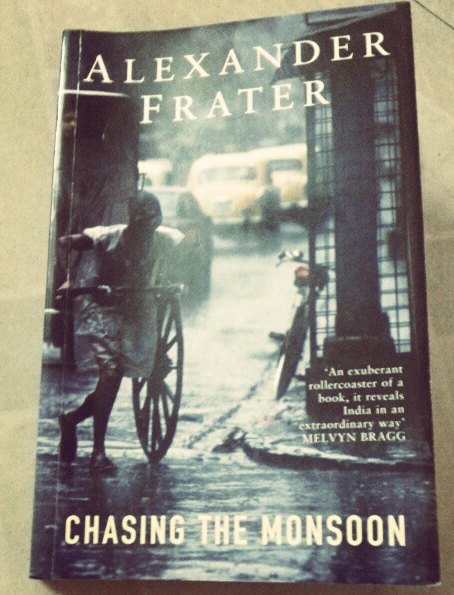Alexander Frater
The monsoon – a phenomenon that has India in a tizzy every year. To me personally, the monsoons are a treasure trove of memories, associated with the various Junes that have been part of my life – childhood, college days, work – different places and different times. So I picked this book with quite some interest.
Frater’s prologue tells us about his intent and motivation, but I’m afraid it tends to get a bit technical and I wouldn’t be surprised if people stopped reading the book because of it! But the chapters that follow are completely different, so do persevere. The first chapter is all about the immediate trigger that made the author set out – chasing the Indian monsoon from “where the rain is born” (to quote Anita Nair) to the wettest place on earth.
Trivandrum is where it all begins and the author captures the tension across the country around the beginning of the monsoon pretty well. The weather forecasters, astrologers, politicians, and even regular folks – all have their theories and perspectives. One of the things that makes the book really good is the author’s reading and chronicling of the milieu he has been pulled into – sociocultural, economic, political and so on. His meeting with Kamala Das, the death of John Abraham, (Malayalam movie director) the Ambassador car’s preeminence, all add flavour to the narrative.
I also have much to thank the author for – the little tutorial on Cochin and its history. (beginning from Nero who linked Rome to Kochi) I actually learned quite a bit of what lies behind the names of roads in a favourite part of the city. In fact, a large portion of the book is taken up by Kerala, justified because of its importance in the scheme of things in this context. Goa was next, and again, personally interesting for me. Bombay in the late 80s and its famous spirit can be clearly seen in the narrative. The anecdote of the mathematician who claimed to have made a -rain-maker’ device, the conversation around rain-making music are all wonderful examples of the unique things that are built around the phenomenon. There’s also an interesting conversation with Pritish Nandy.
Delhi and its bureaucracy take the spotlight next, with some excitement around small trips, that also give glimpse of the poorest of the poor in India. The author’s struggle to get to Cherrapunjee is also well chronicled and also simultaneously show the machine-like coldness of the bureaucracy and that one individual who goes out of the way to help. The part about Kolkata also makes for an interesting read, and so does the last section – Shillong (it had an airport then, albeit a barely functioning one) and further on Cherrapunjee. I could identify the places mentioned thanks to our recent trip.
There is a good amount of humour thrown in into the narration, and that adds to the overall easy tone of the book. That also makes the brief philosophical/geographical meanderings all the more delightful. It’s quite a wonderful read, despite the technical details that intrude occasionally. Early in the book I realised that it was written in the late 80s, and that meant that like my favourite travelogues, this too involved time travel.


Leave a Reply